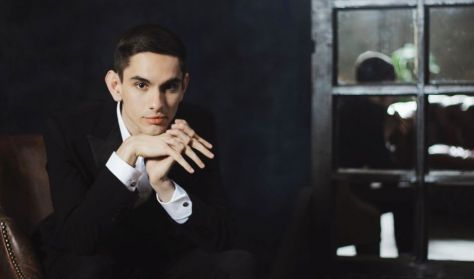
Haydn–Mozart – 3
The BFO's Haydn-Mozart concert in April will be a companion piece to the March program.

The BFO's Haydn-Mozart concert in April will be a companion piece to the March program.
Ön egy múltbeli eseményre keresett rá. Kérjük, válogasson aktuális kínálatunkból a Jegy.hu keresőjében!
Last event date: Sunday, April 14 2024 3:30PM
Program:
Joseph Haydn: Symphony No. 86 in D major, Hob. I:86
Wolfgang Amadeus Mozart: Piano Concerto No. 20 in D minor, K. 466
Serenade for Orchestra No. 9 in D major (“Posthorn”), K. 320
Dmitry Shishkin, piano
Conductor: Gábor Takács-Nagy
It starts with one of Haydn's Paris symphonies, followed by one of Mozart's most popular concertos, this time for piano and orchestra. The second half of the evening will again feature a Mozart serenade, with a special posthorn appearing in the orchestra. The piano solo will be played by Dmitry Shishkin, a Russian in his early thirties, described by Le Temps as "captivating". He won second prize at the 16th International Tchaikovsky Competition, and first prize at the Geneva International Music Competition. According to Evgeny Kissin, he is a serious, dedicated pianist, in whom professionalism meets natural finesse. The concert will be conducted by Gábor Takács-Nagy, a specialist of the two composers and the series' permanent conductor.
By the 1780s, Haydn had become so popular in France that the Concert de la Loge Olympique, a Masonic concert society in Paris, commissioned half a dozen symphonies from him for a substantial fee. The author completed the six works in two years and they were an immediate success. The Symphony in D major is the most richly orchestrated piece in the series: Haydn added trumpets and timpanis to the usual ensemble. After a slow introduction, the first movement opens with a curious main theme that is slow to find its tone. A very slow and very free capriccio, followed by a folk and elegant minuet, after which a finale of repetitive motifs concludes the work.
D minor is a special key in Mozart's oeuvre. He composed parts of the Requiem and parts of Don Giovanni in it, as well as his 1785 Piano Concerto. Although his works were rarely appreciated by 19th-century artists, the Concerto in D minor was an exception; it is the only Mozart piano concerto to have been performed by Beethoven. The composer finished the score only one day before the premiere but it was still a success. Instead of a fanfare-like revelation, the work begins with a mysterious surge. The piano enters later, quietly, almost frightened. Dramatic storm music is wedged in the middle of the slow movement, a more peaceful romance, and only at the very end of the serious and passionate finale does the sun shine with a D major conclusion.
Minuets are usually the must-have elements of multi-movement classics, with the fewest unexpected twists and turns or passion. They are characterized by a familiar shape, a pleasant lightness of touch and a clear instrumentation. Yet it was one of the minuet movements that made Mozart's Serenade in D major, composed in 1779, famous, as the seven-movement work's lively finale is preceded by the sound of a post horn. The opening movement of the work moves from an emotional slow introduction to a brisk fast section. The flutes, oboes, and bassoons take the lead in the next two concerto-like movements, followed by the most tragic music of the piece, before the famous minuet.
Jörg Widmann is a musical polymath par excellence. He is not only one of the greatest living masters of his instrument, the clarinet, but also an excellent composer, orchestrator and conductor. His compositions are palatable, entertaining, thought-provoking, and inventive. His programs are harmonious and carefully selected.
Intoxicating Baroque Vivaldi - Pergolesi - Boccherini - Galuppi - Mozart - Jommelli - Binon - Malov - T’Hooft
Program: Robert Schumann: Symphony No. 3 in E-flat major, Op. 97 (“Rhenish”) Richard Wagner: Die Walküre – Wotan's Farewell and…
Énekes sztárokkal, világhírű kórussal és az ünnepkör legismertebb remekművével készül karácsonyi koncertjére a BFZ.
item(s) in basket
total:
Time limit has expired. Please, put item(s) in to basket again.